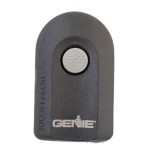How Can I Remove Old Oil Stains From My Garage Floor Tiles
Garage floors, particularly those tiled, are susceptible to oil stains. Vehicles leak, spills happen, and over time, these result in unsightly and potentially damaging marks. Removing old oil stains from garage floor tiles can be a challenging task, but with the right techniques and materials, it is achievable. Successfully addressing these stains requires understanding the nature of the stain, the type of tile, and the appropriate cleaning methods.
The porous nature of many tile types allows oil to penetrate deeply, making surface-level cleaning insufficient. Further, the age of the stain exacerbates the problem, as the oil has had ample time to bond with the tile material. Therefore, a comprehensive approach that combines pre-treatment, cleaning, and post-treatment is often necessary to effectively remove old oil stains.
Identifying the Type of Tile and Oil Stain
Before attempting any cleaning method, it is crucial to identify the type of tile on the garage floor. Common garage floor tiles include ceramic, porcelain, and various types of stone tiles. Each material reacts differently to cleaning agents. For instance, acid-based cleaners are generally safe for ceramic and porcelain but can damage certain stone tiles like marble or limestone.
Ceramic tiles are known for their durability and resistance to stains, while porcelain tiles are even more resistant due to their lower porosity. However, the grout lines between ceramic and porcelain tiles are more porous and absorb oil easily. Stone tiles, being naturally porous, are the most susceptible to oil stains. It is therefore essential to ascertain the tile type to select the appropriate cleaning solutions.
Similarly, understanding the type of oil stain is important. Motor oil stains differ from hydraulic fluid stains, for example. Knowing whether the stain is from a synthetic or conventional oil can also affect cleanser selection. Fresh oil spills are significantly easier to remove than old, dried-in stains. If available, consulting the tile manufacturer’s recommendations for cleaning procedures is advisable.
Failing to correctly identify tile types can lead to damage. Using harsh chemicals on delicate stone can result in etching, discoloration, or erosion. Similarly, abrasive cleaning methods on certain tile finishes can cause scratching. Therefore, proper identification combined with cautious testing of cleaning solutions in inconspicuous areas is a fundamental first step.
Pre-Treatment Methods for Oil Stains
Pre-treatment is a crucial step in removing old oil stains. These methods aim to loosen the oil embedded in the tile pores, making it easier to lift during the subsequent cleaning process. Several effective pre-treatment options exist, each with its own advantages and limitations.
One common method involves using absorbent materials like cat litter, baking soda, or cornstarch. These materials are spread liberally over the oil stain and left to sit for several hours, or even overnight. The absorbent material draws out the oil from the tile pores. Subsequently, the material can be swept or vacuumed up, leaving behind a surface that is more receptive to further cleaning.
Another pre-treatment option involves using commercial degreasers specifically formulated for oil stains. These degreasers often contain solvents and surfactants that break down the oil. Follow the manufacturer's instructions carefully, as some degreasers can be corrosive or harmful to certain tile types. Always test the degreaser in an inconspicuous area first to ensure it does not damage the tile.
Additionally, a poultice can be used to draw out the oil from the tile. A poultice typically consists of an absorbent material mixed with a solvent or degreaser to form a paste. The paste is applied to the oil stain, covered with plastic wrap, and left to sit for 24 to 48 hours. The absorbent material draws the oil out of the tile, and the plastic wrap prevents the poultice from drying out prematurely. After removing the poultice, the area should be thoroughly cleaned.
The success of pre-treatment depends on factors such as the age and severity of the stain, the type of tile, and the absorption capacity of the pre-treatment material. Multiple applications of the chosen pre-treatment method may be necessary to significantly reduce the staining before moving on to more aggressive cleaning techniques.
Effective Cleaning Solutions and Techniques
After pre-treating the oil stain, the next step is to employ effective cleaning solutions and techniques to remove the remaining residue. Several cleaning agents and methods can be used, depending on the tile type and the severity of the stain. A combination of approaches may be necessary to achieve optimal results.
For ceramic and porcelain tiles, a solution of hot water and dish soap is often sufficient for removing residual oil. The dish soap acts as a degreaser, helping to lift the remaining oil from the tile surface. Use a scrub brush with stiff bristles to agitate the solution and scrub the affected area thoroughly. After scrubbing, rinse the area with clean water and dry it with a clean cloth.
For more stubborn stains on ceramic and porcelain tiles, a stronger cleaning solution may be required. Trisodium phosphate (TSP) is a powerful cleaner that can effectively remove grease and oil stains. However, TSP is a strong alkaline compound and should be used with caution. Wear gloves and eye protection when using TSP, and ensure adequate ventilation. Dissolve TSP in hot water according to the manufacturer's instructions and apply it to the stained area. Scrub thoroughly and rinse with clean water.
For stone tiles, it's crucial to use pH-neutral cleaners that are specifically formulated for stone. Acidic or alkaline cleaners can etch or damage the stone. Mix the cleaner with water according to the manufacturer's instructions and apply it to the stained area. Use a soft-bristled brush or sponge to scrub the area gently. Rinse with clean water and dry with a clean cloth.
In some cases, a pressure washer can be used to remove stubborn oil stains from garage floor tiles. However, caution must be exercised to avoid damaging the tiles or grout. Use a low-pressure setting and a wide-angle nozzle to prevent etching or cracking. Start by testing the pressure washer in an inconspicuous area to ensure it does not damage the tiles.
Regardless of the cleaning solution used, it's essential to thoroughly rinse the cleaned area with clean water to remove any residual cleaning agents. Failure to rinse properly can leave behind a residue that attracts dirt and grime, negating the cleaning efforts.
Post-Treatment and Preventative Measures
After successfully removing the oil stain, it is essential to implement post-treatment and preventative measures to protect the garage floor tiles and prevent future oil stains. These measures can extend the lifespan of the tiles and reduce the need for frequent cleaning.
For stone tiles, sealing is a crucial step in protecting the surface from future stains. Apply a high-quality stone sealer according to the manufacturer's instructions. The sealer penetrates the stone pores, creating a barrier that prevents oil and other liquids from being absorbed. Reapply the sealer periodically, as needed, to maintain its effectiveness. The frequency of reapplication depends on the type of sealer and the level of traffic in the garage.
Even for ceramic and porcelain tiles, applying a grout sealer is highly recommended. Grout is porous and readily absorbs oil and other contaminants. Sealing the grout lines creates a barrier that prevents stains from penetrating, making it easier to clean spills and maintain the appearance of the garage floor.
To prevent future oil stains, place drip pans under vehicles to catch oil leaks. Regularly inspect vehicles for leaks and address them promptly. Clean up any spills immediately to prevent them from soaking into the tiles. Using floor mats in high-traffic areas can also help protect the tiles from wear and tear and prevent stains.
Regular cleaning and maintenance are essential for keeping garage floor tiles in good condition. Sweep or vacuum the floor regularly to remove dirt and debris. Mop the floor with a mild detergent solution to remove surface grime. Addressing spills and stains promptly will prevent them from becoming deeply embedded and more difficult to remove.
By implementing these post-treatment and preventative measures, the garage floor tiles can be protected, and the need for extensive cleaning can be minimized. Regularly maintaining the floor will ensure it remains clean, attractive, and functional for years to come.

How To Remove Oil Or Grease From Tiles Easily

How To Remove Stains From Your Garage Floor Tcc The Cleaning Company

How To Remove Oil Stains From Your Garage Floor All Floors

How To Remove Old Oil Stains From Garage Floor Flow Wall

How To Remove Grease Stains From Concrete Prosoco

Oil Grease Stain Remover Prosoco

Satisfying Garage Floor Cleaning How To Get The Oil Stains Out Asmr Pressurewash

How To Remove Oil Stains From Concrete Floors Family Handyman

Tips To Remove Oil Stains On Your Garage Floor

How To Clean A Garage Floor All Floors
Related Posts








